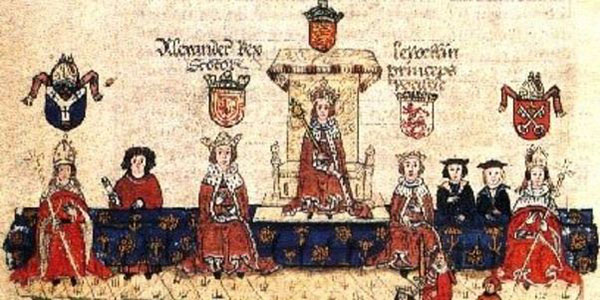Not even the royal families of Europe, the most powerful people of their time, could escape from being broken down into feudal class categories.
The feudal monarchs of Europe held absolute power over their people and their lands and were considered second only to God. The royals of medieval Europe ruled each country with their own system of royal class organization, however, they mostly held these similar titles, although, due to the different languages they were often called something different. They rank as follows:
The Role of an Emperor
The ruler of an empire, during medieval times an emperor was given precedence over all others, including kings. The title was created as an attempt to link the ruling monarchs to the traditional customs of the ancient Romans, and thus emperors frequently claimed a divine right to also become the leader of the church. The grandest empires of the time were the Byzantine Empire and the Holy Roman Empire. It should be noted that areas that where ruled by emperors did not also have kings in their royal social structure.The female equivalent of an emperor is an empress.
The King’s Role
The monarch of a kingdom or a realm and much like emperors, they often held a place at the head of the church. Traditionally you could only become a king if you were the member of the hereditary bloodline of the royal family and was almost exclusively reserved for the eldest son of the former king. The female form of king is queen however it should be noted that a queen may be a monarch in her own right, (called a queen regnant) as was the case with Mary Queen of Scots and Queen Elizabeth I.
The Title of Grand Duke/Grand Prince
Usually a rank between king and prince, the grand duke or grand prince was usually a title that meant that it’s holder controlled extensive lands or ruled several tribes. They were commonly treated like kings but were not elevated as sovereigns like their royal counterparts. The female equivalent is grand duchess or grand princess.
The Rank of Crown Prince
The crown prince was the heir to the throne of his country, and as such held more power and had a larger principality than other princes. The title was usually given to the eldest living son of a king, however, if a king could not produce and heir, the title would move on to the eldest brother of the king or another male relative. Also if a king’s son’s were killed after producing their own heirs the title could pass directly to a king’s grandson. The female equivalent, crown princess was not only held by the wife of a crown prince but also by the daughter of a king who had no living male heirs.
The Title of Prince
Typically a male member of the royal family that was not the king. Also a prince was the ruler of a principality which was usually a step down from a kingdom ( a kingdom is usually broken down into several principalities where the prince governed the king’s lands while the king handles matters of state). A female member of the royal family that is not the queen is a princess.
Today’s Royal European Titles
While these royal European titles were mainly created in antiquity, many are still being used today, although not too many monarchs claim divine right anymore. Countries like Great Britain, The Netherlands, Spain, Monaco, Norway and Belgium are still ruled by monarchies however they have mostly converted to constitutional monarchies, where the monarch is a ceremonial head of state and the country is ruled by some sort of Parliament.








